#Category 1995 films
Explore tagged Tumblr posts
Text



Persuasion (1995, Roger Michell)
01/10/2024
#persuasion#film#1995#roger michell#Scriptment#jane austen#england#1814#napoleonic wars#Bath Somerset#Amanda Root#united kingdom#Category 1995 films#Film genre#drama#Romance film#film director#screenplay#Nick Dear#film producer#bbc#cinematographer#john daly#film editing#Kate Evans#soundtrack#Jeremy Sams#scenography#Brian Sykes
18 notes
·
View notes
Text
Akira Ifukube (Naoki Satō) - Godzilla Minus One - Godzilla Suite II 2023
Godzilla Minus One is a 2023 Japanese epic kaiju film written, directed, and with visual effects by Takashi Yamazaki. It won Best Visual Effects at the 96th Academy Awards, becoming the first non-English language film to do so. It was the first Godzilla film to be nominated for an Academy Award, as well as the first Japanese film ever to receive a nomination in the Best Visual Effects category.
The score is composed by Naoki Satō, but also contains re-recorded pieces from several Godzilla movies composed by Akira Ifukube; a three-part 10-minute "Godzilla Suite" comprising new recordings of music from classic Ifukube Godzilla scores, including the famous 1954 march, plus brief references to King Kong vs Godzilla from 1962, Mothra vs Godzilla from 1964, and Godzilla vs Destroyah from 1995. These tracks are mostly used as underscore in the major battle sequences, such as Godzilla's first attack on Tokyo, and then again during the final battle. The soundtrack won Best Original Score for a Fantasy/Science Fiction Film at the 2024 International Film Music Critics Association Awards.
"Godzilla Suite II" received a total of 85,2% yes votes!
youtube
#finished#high yes#50s#20s#soundtracks#film score#o2#o2 sweep#lo3#akira ifukube#naoki saito#instrumental
501 notes
·
View notes
Text
The Most Common Types of Fairy Godmother in "Cinderella" Adaptations
Since @ariel-seagull-wings and I have already posted about the different portrayals of Cinderella and her prince, I thought it might be nice to look at the different portrayals of the other characters too.
Each portrayal of the Fairy Godmother is unique, but patterns do emerge across the different adaptations. I've found that the different portrayals of the character can be divided into five categories, with some portrayals combining two of them together.
The Regal, Ethereal Lady
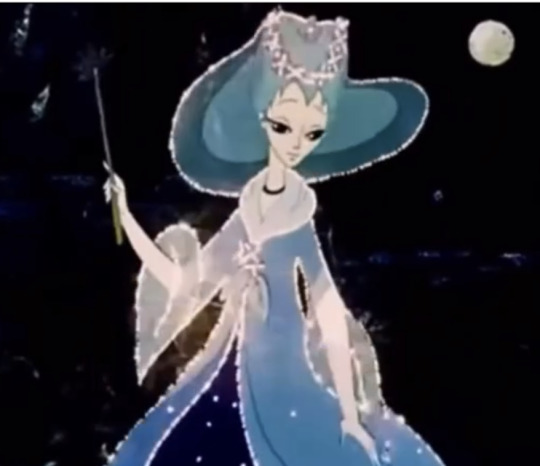
This beautiful, elegant creature is emphatically a fairy godmother, not a godmother who happens to be a fairy. She wears a gorgeous flowing gown, not of any earthly fashion, and though her age is indeterminate, she seems youthful yet wise. Her demeanor is kind and gentle, yet serious and stately, though she might have a slight playful streak. She takes on the role of the story’s moral authority as well, usually emphasizing that she comes to reward Cinderella for her goodness. Often, she first appears disguised as an old beggar woman to test the respective virtue of Cinderella and her stepfamily, and Cinderella earns her good will by giving her bread while the stepfamily scorns her. Sometimes she has attendant fairies or other magic-users to assist her as well: she might even be portrayed as the Fairy Queen, who lives in the forest like Shakespeare’s Titania and has countless fairies, elves, and sprites as her command. Fairy Godmothers of this type are most often seen in earlier adaptations: they include “La Fée” in Massenet’s opera Cendrillon, the Fairy Godmother in Prokofiev’s ballet, Inez Marcel in the 1914 silent film, Varvara Myasnikova in the 1947 Russian film, Celeste Holm in the 1965 version of Rodgers and Hammerstein’s musical, and the animated Fairy Godmothers both in the 1935 Betty Boop cartoon Poor Cinderella and in the 1979 Russian animated short.
The Grandmother Figure
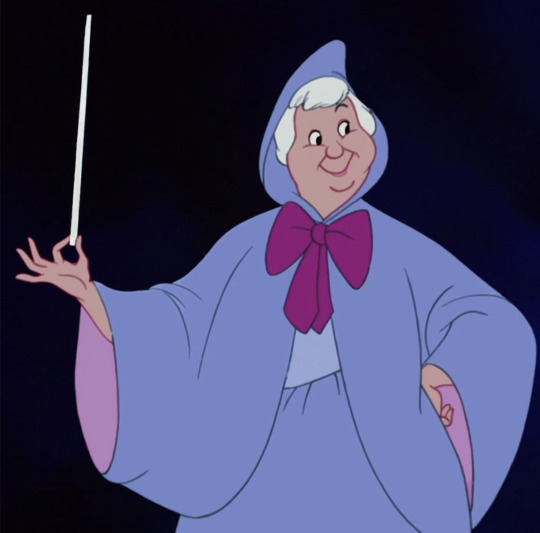
This Fairy Godmother is a little old woman, and she’s very human as fairies go. She might not be regal, or beautiful, but she radiates a sense of warmth and comfort like all the best grandmothers do. Her sweetness, gentleness, and maternal affection are just what Cinderella needs in her despair, and sometimes she can be adorably absentminded – forgetting where she put her wand, almost sending Cinderella off to the ball in her rags, etc. – which adds gentle comic relief to the story. Yet she also conveys the wisdom that comes with age, and her magic is just as powerful as that of any younger, more glittering fairy. The quintessential Fairy Godmother of this type is the one voiced by Verna Felton in Disney’s classic 1950 animated film. Several other animated versions aimed at children feature grandmotherly Godmothers too, like the versions from Jetlag Productions and Burbank Animation Studios. In the 1995 musical A Tale of Cinderella, “La Stella” is Cinderella’s actual grandmother, whose magic sadly couldn’t save her daughter’s life, but can save her granddaughter’s future. Jean Stapleton’s Fairy Godmother in the 1985 Faerie Tale Theatre adaptation is also very grandmotherly, although she has additional glamour and a sense of humor that bring her closer to the next type of Fairy Godmother on the list (see below).
The Sassy Glamour Queen
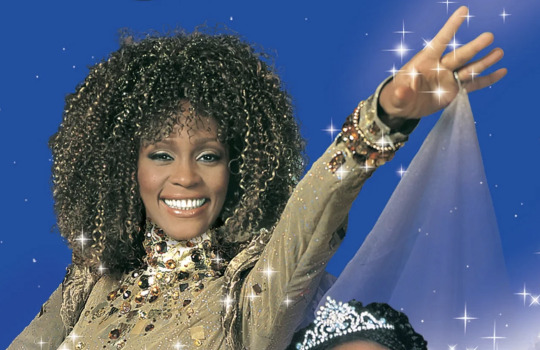
She’s beautiful, she’s elegant, she’s as smart as a whip, and she knows it! This is a more modern, lighthearted twist on the Regal, Ethereal Lady. The sparkle of the gorgeous gown she wears is matched only by the sparkle of her playful wit, and her confidence in herself is surpassed only by her confidence in Cinderella. Her sense of humor lifts Cinderella’s spirit, while her intelligence, poise, and indefatigable spirit make her a strong role model for the girl. Yet though kind and caring, this Godmother tends to be a bit more standoffish than others – though not in a bad way. She urges Cinderella to solve her own problems, not just rely on her, and to have courage and faith in herself against all odds. The most famous Godmother of this type is probably Whitney Houston in the 1997 version of Rodgers and Hammerstein’s musical. But Edie Adams’ elegant and mischievous Godmother in the original 1957 Rodgers and Hammerstein telecast is a good example too: although since she spends most of the story masquerading as a human, she combines this portrayal with another type (see the bottom of the list). Meanwhile, Jean Stapleton’s Faerie Tale Theatre Godmother has the elegance and humor of this type, but as an elderly woman, she combines it with the Grandmother Figure. Last, but not least, is Billy Porter’s nonbinary “Fab G.” in the 2021 Sony/Amazon musical.
The Eccentric Mage
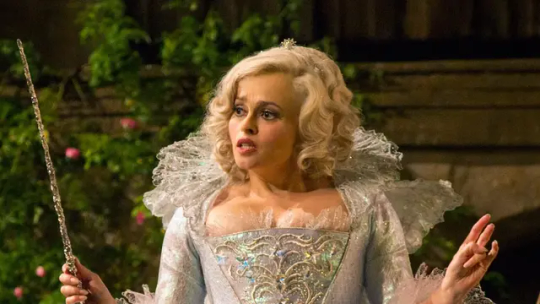
This funny and kooky Godmother is one of those beings who combine magic with just a little insanity. Her mind is like her powers: not entirely of this earth. Like the Regal, Ethereal Lady, she tends to disguise herself as a poor, ragged old woman to test Cinderella’s virtue and befriend her before the ball – but she takes it a step further and masquerades as a crazy homeless woman, who spouts odd remarks and whom anyone less kind than Cinderella might try to avoid. Yet even when not in disguise, she’s a bit of a ditzy oddball, who sometimes fumbles her spells once or twice before she gets them right: e.g. dressing Cinderella in the wrong type of clothing at first, or turning the pumpkin into the wrong item, or accidentally making it grow to a gigantic, greenhouse-shattering size before it becomes a coach. Fairy Godmothers of this type include Helena Bonham Carter in Disney’s 2015 live action film, “Crazy Marie” in the 2013 Broadway version of Rodgers and Hammerstein’s musical, Joyce Gordon in the Muppets’ Hey, Cinderella! and Estelle Winwood as Mrs. Toquet in The Glass Slipper. Although since Mrs. Toquet never takes off her “crazy poor woman” disguise, she combines this variant with another one: The Godmother Who Happens to Be a Fairy (see below).
The Godmother Who Happens to Be a Fairy
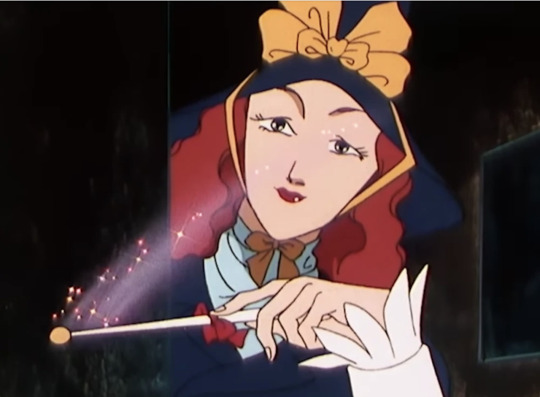
This is the most human portrayal of the Fairy Godmother: an ordinary woman who just happens to have magical powers, which she hides until they’re needed. Cinderella typically befriends her long before the ball, sometimes knowing her from childhood. She might be a household servant, or a kindly neighbor, or a traveling portrait painter, but whoever she is, you wouldn’t guess that she’s a fairy. She might even pretend not to believe in magic. She might also be Cinderella’s literal godmother – a close friend of her late mother’s, or even a relative. But no matter who she is, the friendship and the simple, human advice she gives to Cinderella (e.g. never to lose hope, or not to be afraid to love the Prince) are just as valuable as her spells. Edie Adams’ mischievous Godmother combines this characterization with the Sassy Glamour Queen in the 1957 Rodgers and Hammerstein musical, Estelle Winwood’s Mrs. Toquet in The Glass Slipper combines it with the Eccentric Mage, and Annette Crosbie’s sensible and ladylike yet quirky Godmother in The Slipper and the Rose combines it slightly with the Eccentric Mage too. Other examples are the artist Paulette in the anime series Cinderella Monogatari, the cook Mandy in the original novel of Ella Enchanted (who is also the Grandmother Figure), and the pasta-stirring grandmother La Stella in the musical A Tale of Cinderella (ditto).
@ariel-seagull-wings, @thealmightyemprex, @adarkrainbow, @themousefromfantasyland, @faintingheroine, @angelixgutz, @softlytowardthesun, @amalthea9
#cinderella#fairy tale#fairy godmother#adaptations#characterization#comparison#character types#patterns#fictional characters
77 notes
·
View notes
Text
I was tagged by @memory-for-trifles for my top first-time watches in 2024 of movies not from 2024, and also by @door for my nine favorite movies of the year, which I am combining to nine non-recent releases. Thank you buddies!!
Also NOT thank you, as it seems I watched 190 new to me, pre-2024 movies last calendar year, and rated fully 45 of them five stars.
....so here is a representative nine categories (blood! tears!!), and then the whole list of older movies that fucking rule.
: :
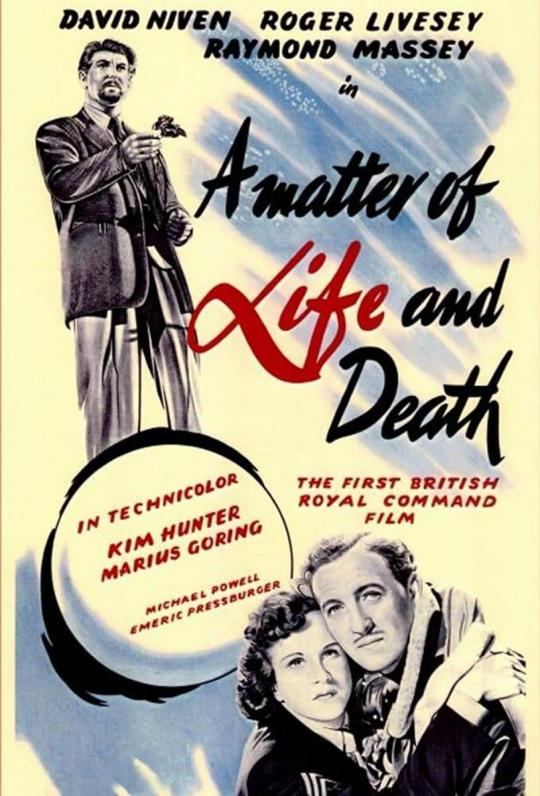


Powell & Pressburger: A Matter of Life and Death (1946) Pre-Code: Trouble In Paradise (1932) Screwball: It Happened One Night (1934)



Western: Dead Man (1995) Marty: Mean Streets (1973) Agnès: Le Bonheur (1965)



Historical: The Leopard (1963) Satyajit Ray: Pather Panchali (1955) Noir: Out of the Past (1947)
: :
Top 45 Non-2024 Movies I Watched in 2024 [alphabetical]
A Matter of Life and Death (1946) Powell & Pressburger Ace In the Hole (1951), Billy Wilder All About Eve (1950), Joseph L. Mankiewicz Bad Day at Black Rock (1955) John Sturges Daisies (1966) Věra Chytilová Dead Man (1995) Jim Jarmusch Cat People (1942) Jacques Tourneur It Happened One Night (1934) Frank Capra Johnny Guitar (1954) Nicholas Ray La Ronde (1950) Max Ophüls Laura (1944) Otto Preminger Le Bonheur (1965) Agnès Varda Little Women (1994) Gillian Armstrong Mean Streets (1973) Martin Scorsese Metropolitan (1990) Whit Stillman Miracle on 34th Street (1947) George Seaton Nights of Cabiria (1957) Federico Fellini On the Beach (1959) Stanley Kramer Only Angels Have Wings (1939) Howard Hawks Out of the Past (1947) Jacques Tourneur Pather Panchali (1955) Satyajit Ray Queen Christina (1933) Rouben Mamoulian Sunset Boulevard (1950) Billy Wilder The Age of Innocence (1993) Martin Scorsese The Awful Truth (1937) Leo McCarey The Best Years of Our Lives (1946) William Wyler The Big City (1963) Satyajit Ray The Fabulous Baron Munchausen (1962) Karel Zeman The Heiress (1949) William Wyler The Lady Vanishes (1938) Alfred Hitchcock The Leopard (1963) Luchino Visconti The Lodger: A Story of the London Fog (1927) Alfred Hitchcock The Manchurian Candidate (1962) John Frankenheimer The Philadelphia Story (1940) George Cukor The Red Shoes (1948) Powell & Pressburger The Servant (1963) Joseph Losey The Treasure of the Sierra Madre (1948) John Huston The Wind (1928) Victor Sjöström They Shoot Horses, Don’t They (1969) Sydney Pollack To Be or Not to Be (1942) Ernst Lubitsch Trouble in Paradise (1932) Ernst Lubitsch Ugetsu (1953) Kenji Mizoguchi Wait Until Dark (1967) Terence Young Wings of Desire (1987) Wim Wenders Zodiac (2007) David Fincher
Honorable Mentions
I had technically watched Casablanca (1942) and Brief Encounter (1945) many, many many many years earlier, but I rewatched both of them this past year as an adult, and guess what? Five star films.
Tagging @passingknightly, @knighthooded, @camestela, @bakingblues, @forshesajollygoodfellow, @alpineshepherdlass, @valentinsylve, and anyone else who enjoys a MOVIE
31 notes
·
View notes
Note
Recommend me something with giant robots that really encapsulates the giant robots media experience. Not necessarily something good; the best representative sample. I trust your judgement.
This is kind of hard to answer, as the giant robot experience is kind split down the middle into two broad categories.
The first flavor is military Scifi, this is usually given the moniker "Real Robot" because it leans more toward hard scifi and the idea of the mech as an actual machine with mechanical and logistical concerns. For my money the best taste of this type of story is original Mobile Suit Gundam from 1979. It's kind of the originator of the entire Real Robot conceit.
Gundam, and another work by it's director, Yoshiyuki Tomino, Space Runaway Ideon, were both major Influences of Neon Genesis Evangelion, which is not really a typical "real robot" show (in fact it's often more like Ultraman than mecha), but Eva is extremely influential on the genre and there's a whole generation of shows that are either responding to it or ripping it off.
The second flavor is what's generally called "Super Robot". Super Robot stories are classically Saturday Morning cartoons, complete with bright colors and flashy super hero style brawls and big special attacks whose names get screamed out before they're executed. The OG Super Robot is Mazinger Z, and both it's manga and anime are worth looking at, but for my money the best Super Robot experience is The Legendary King of Braves: GaoGaiGar. It's a perfect Saturday morning cartoon style mecha with a lot of charm and good production. The major caveat with it is that it uses an obscene amount of strobe effects that make it hard to actually look at the action scenes sometimes. Serious Epilepsy warning for that show.
Super Robot has also evolved in later years into more of a high octane action joint, Gurren Lagann is the best known example of this style of Super Robot, but for my money the best in this style is one of Gainax's earlier works, Gunbuster. It's just as high octane as it's little brother and has genuinely incredible animation.
There's also a sub-set of mecha I call "Boy and His Dog" mecha, which typically focus on a big meandering robot companion to a young boy, with a focus on coming of age type stories. The original of these is Tetsujin-28 (which is also arguably the first true mecha), also known as Gigantor in the west. There's a 2004 a anime that reimagines the story as an examination of post world war II Japan and it's pretty good. My favorite of these is Giant Robo: The Animation, which is also just my favorite work of mecha genre stuff period. Its very well animated and captures a strong pulp adventure vibe.
Alright so I've yet to actually give you an answer to this ask, I've just kind of rambled about mecha, but I wanted to lay some groundwork. I'm gonna list a lot of stuff below but the main touchstones I'd reccomend to get the taste of the genre you're looking for are the works listed under anime. The rest are just further reccomendations of things I like. Sorry about my chronic long windedness.
Manga:
- Mazinger Z by Go Nagai
- Getter Robo by Ken Ishikawa and Go Nagai (didn't mention this one above but it's about as classic as Mazinger. I reccomend the manga because none of its adaptations really capture the energy of the manga)
Anime:
- Mobile Suit Gundam (1979) (there's a lot of gundam out there and a lot of debate about where to start. The original show is the best starting point in my opinion, especially in this context)
- Neon Genesis Evangelion (1995)
- Gunbuster (1988)
- Legendary King of Braves GaoGaiGar (1997) (mind the epilepsy warning. If the strobes are a problem try Brave Express Might Gaine, Combattler V, or the Mazinger Z anime)
- Giant Robo: The Animation (1992) (also called Giant Robo: The Day the Earth Stood Still)
- Macross: Do You Remember Love? (1984) (film adaptation of the TV anime Super Dimension Fortress Macross, I think the movie is better than the show.)
- SSSS. Gridman and SSSS. Dynazenon (these two shows are just really good so I'm sneaking them in here)
Video Games:
- Armored Core 6: Fires of Rubicon (you can give any Armored Core a try this is just the most recent one)
- Heaven Will Be Mine (visual novel. It's a favorite of mine)
- Super Robot Wars 30 (a turn based strategy game, SRW is a massive crossover of tons of different mecha shows. 30 is the easiest of the series to get in the US. SRW is pretty beloved in the mecha fandom)
Tabletop Games:
- Lancer by Massif Press
- BattleTech by Catalyst Games (BattleTech is the one solidly American mecha franchise which makes it pretty unique. it has a complicated relationship with its Japanese influences)
Novels:
- Iron Widow by Xiran Jay Zhao (cool feminist mecha story that draws heavily upon, and reimagines, a lot of traditional Chinese culture, literature, and historical figures)
- Titanicus by Dan Abnett (this is a Warhammer 40k novel, but it's an old fav of mine. It's focused on the giant Titan mechs of that setting and it was my intro to 40k and sparked my interest in mecha)
Podcasts
- Friends At the Table: COUNTER/Weight (Friends at the Table is a great actual play podcast and COUNTER/Weight is a really fun mecha focused campaign of there's.)
- Mobile Suit Breakdown (great companion podcast for the Gundam franchise if you want more historical and cultural context and analysis for the various shows)
#mecha#mecha anime#mazinger z#getter robo#giant robo the animation#mobile suit gundam#gaogaigar#gunbuster#lancer#heaven will be mine#armored core#battletech#gurren lagann#iron widow#neon genesis evangelion#friends at the table#mobile suit breakdown
50 notes
·
View notes
Text
A GUIDE THROUGH DANIEL BRÜHL'S FILMOGRAPHY
Now that I’ve gone through most of Daniel’s works, I thought this table might help those who are about to embark on the same obsessive journey I began months ago. I have no intention of spoiling anything, I’m only hoping this will provide someone a good idea of what to expect and help them in the selection process. Like, All Quiet on the Western Front is an excellent film but I wouldn’t want to watch that when I’ve had a really shitty day and I just need something light and dumb.
I do a 1 to 10 rating to make it as precise and objective as possible but know that some areas will be subject to my personal taste, factors like the mood I was in while watching it, and the oft-faulty machine that is my memory.
Before I get into the sections, let me quickly paint a picture of my personal taste. From Daniel’s works, my top 3 are Rush (2013), Goodbye Lenin! (2003), and Inglorious Basterds (2009). If we get into favorite films of all-time, it would include Parasite (2019), Before Sunrise (1995), When Harry Met Sally (1989), Atonement (2007), A Quiet Place (2018), Amélie (2001), The Dark Knight (2008), Arrival (2016), and Past Lives (2023). I’m always down for a dark comedy, an epic drama/romance, and a psychological thriller.

Now that's out of the way, onto the TABLE SECTIONS:
ROLE PROMINENCE – how much do you see of Daniel in this film? And, no, this has nothing to do with his ass—though that is always a welcome sight.
IMPORTANT – do we learn something from this movie? Are there interesting concepts being explored? Is it relevant? Does it carry a significant message, however obvious? Is it a career highlight for Daniel? These are the considerations for this category.
PAINFUL – are the themes dark and heavy? Is it stressful to watch? Is Daniel tortured into a pulp? Does it tug at your heartstrings? Is the movie deliberately cringey and embarrassing? This section covers a wide spectrum, so you must refer to the other sections to infer if it’s worth the pain. I have a high tolerance for violence and dark humor, what pains me is a plot that goes nowhere, a poor script, or a movie that wastes so much potential. How invested I am with the story and the characters also has a bearing on my rating. For instance, I feel zero empathy for Chris in Cargo because he's an idiot who had it coming.
WATCHABLE – does it hold your attention throughout? Is it enjoyable? Is it something you can watch over and over again? I have to stress that this section is sometimes influenced by my expectations of a movie and, often, by what I need in that moment.
ADDITIONAL NOTES – here I try to add factors that might have affected my viewing experience, further insight into my rating, and other vital (or not-so-vital) information.
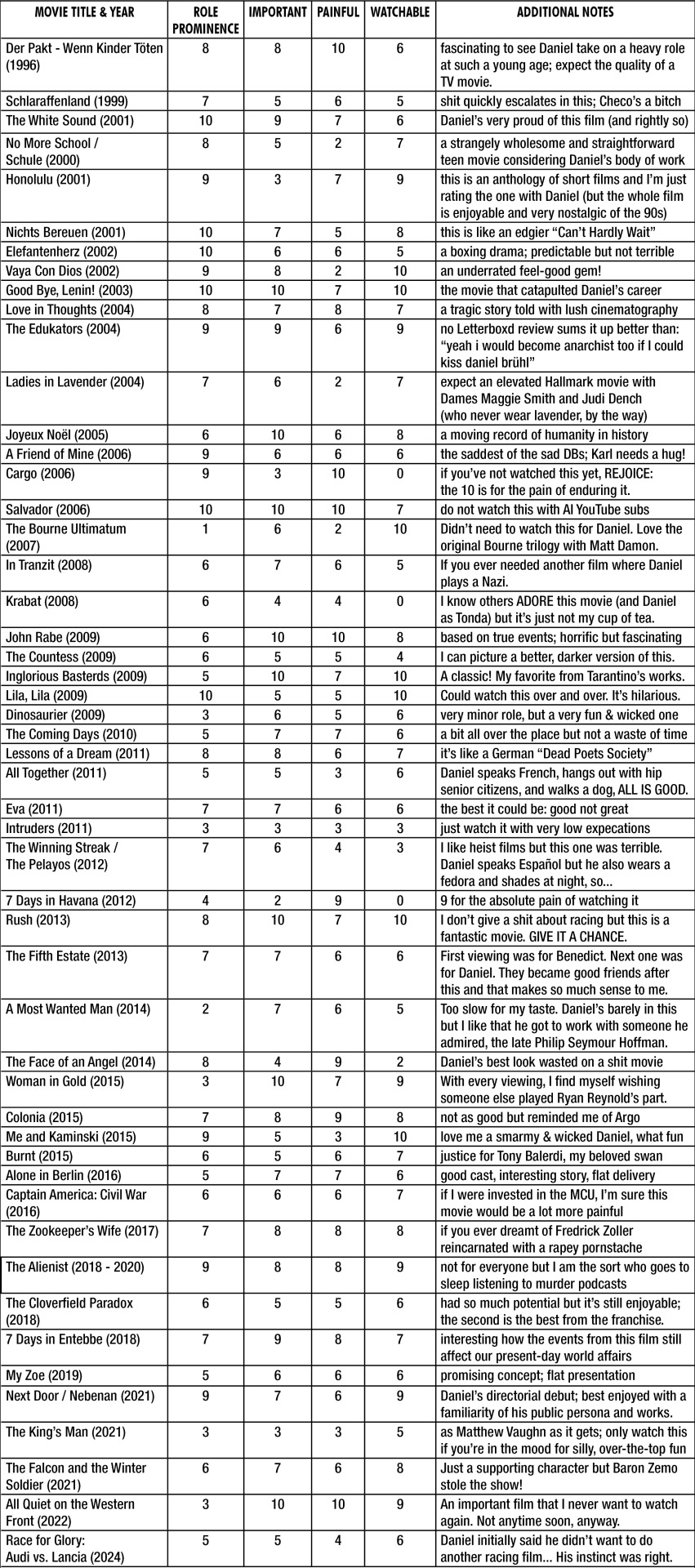
p.s. didn't bother watching 2 Days in Paris and 2 Days in New York because I knew he only had a cameo in those.
OTHER RELATED BLOGS:
The Best of Daniel Brühl 5 Types of Daniel Brühl Characters In search of Daniel Brühl movies?
#daniel brühl#films#inglorious basterds#rush#goodbye lenin#the alienist#the falcon and the winter soldier#movies#vaya con dios#honolulu#me and kaminski#lila lila#nebenan#john rabe#colonia#all quiet on the western front#schule#love in thoughts#the edukators#der pakt#captain america civil war#burnt#nichts bereuen#the zookeeper's wife#the cloverfield paradox#salvador#the white sound#ladies in lavender#lessons of a dream#the coming days
75 notes
·
View notes
Text
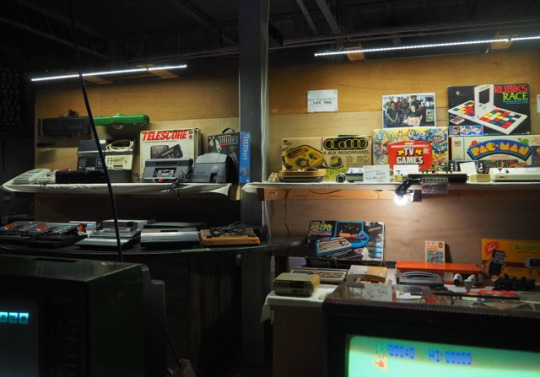
International standards being what they are, the majority of consoles created in or imported to Japan, including those targeting uniquely domestic audiences, employ names or acronyms based on the English language. For the sixty odd years that Japan has been producing electromechanic and electronic game systems there is but a literal handful of systems named in the Japanese language that, I'd wager, even the most seasoned players know little or nothing about. Your curiosity may be rewarded if you continue reading.

1982 - Contrary to what you may have heard or read, Tomy was the first Japanese toy company to develop a computer. Styled after the Texas Instruments TI-99/4 and manufactured by Matsushita, the Pyūta was purposely designed to sit on toy store shelf space as hinted at by its name, a childish diminutive of the word Konpyūtā.


1983 - John Ross's Mini-Arcade project was sold world over under the sweet-sounding name Vectrex. The Japanese distributor, Bandai, was not so enamoured with it. Believing that a Japanese name would do better at retail, it was commercialized as Kōsoku-Sen - The Lightspeed Ship!
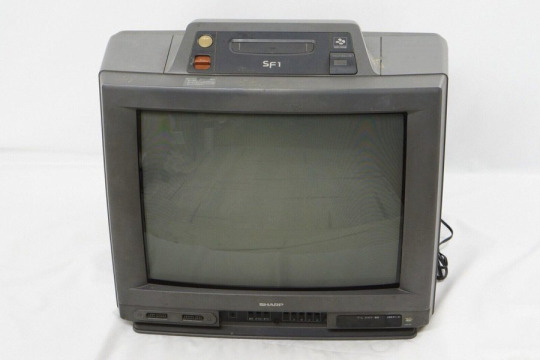
1988 - Bandai's history as a console maker is quite unlike any other. Terebikko is a VHS-based gaming system that uses the TV audio output to play sound via its phone receiver and quiz players with multiple response questions. The console produces a sound output that informs the player if the answer was correct or not. Tapes include animated films starring Mario, Anpanman and the characters from Dragon Ball, some even fetching quite the high price at auctions these days.

1990 - Sharp is seldom given due recognition for creating some of Nintendo's finest and durable consoles. The Sūpā Famikon Naizou Terebi SF1 TV perfectly mirrors the concept of their 1983 C1 NES TV, in spite of the technological leap. Its Japanese name describes its built-in console function. Nintendo fanboys would pounce on me were I to snub it.
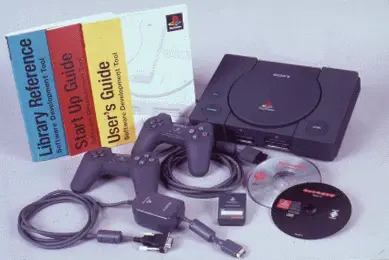
1995 - Further proof of Bandai's unorthodox approach to console design is found in their unsuccessful Denshi Manga Juku - lit. Electronic Manga Tutor. The first ever stylus-based console - once again, contrary to what many may yet hold to be true - some of the games in its miniscule library allowed the player to design and animate characters or scenes; while others presented a blank canvas for the user to draw the game's protagonist.
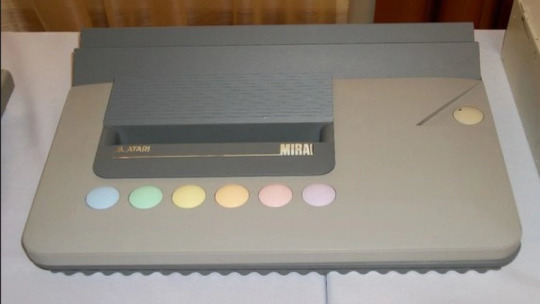
1996 - A retail development kit, but a console all the same, Sony's Netto Yarōze was an ambitious project resulting in dozens of homebrewed independent titles. The name matches its vision: a network of creators coming together to realize their individual game design aspirations. Of all the systems in its restricted category, it was by far the most successful.
Unreleased - It's a beautiful fact that the first arcade game and globally successful console had a Japanese word stamped on them - Atari. Mirai, meaning Future, is a prototype found in the mid-1990s, about which nothing can be said authoritatively apart it from being a cartridge-based system. Given the more or less overt resemblances to the Atari XEGS, it is possible that it was designed by Ira Velinsky, in which case it could date from the late 1980s. Though not a made-in-Japan product, its borrowing of a Japanese word makes its presence in this list mandatory.
#consoles in japan#japanese-named consoles#videogame history#tomy#pyuta#bandai#Kōsoku-Sen#atari#mirai#sony#net yaroze#Denshi Manga Juku#terebikko#sha#sharp#Sūpā Famikon Naizou Terebi
30 notes
·
View notes
Note
Do you have any favorite exploitation films? I know you like horror more but some of them can be horror/thriller adjacent You have good taste so I wanna know your opinion :D
sorry it took me so long to answer this but THANK YOUUUUUU for valuing my opinion hehehehe giggling and kicking my feet <3
i do struggle a little bit with defining what is and isn't exploitation so i'll divide my recs in categories to help you find something you like! i also put a star behind my personal favs! :)
a horror movie but they hired a freak as makeup artist (aka "normal" horror that goes extra hard on the gore) ;
battle royale (2000) ☆
becky (2020) & the wrath of becky
the collector (2009) & the collection (2012) ☆
evil dead (2013) ☆
green room (2015) ☆
hatchet franchise (2006-2017)
house of wax (2005) ☆
the loved ones (2005) ☆
sleepaway camp (1983) ☆
talk to me (2022)
the texas chainsaw massacre (1974) ☆
when evil lurks (2023)
you're next (2011) ☆
yummy (2019)
who needs a plot when there's limbs flying around (aka mostly just gore) ;
the beyond (1981) ☆
braindead (1992) ☆
demons (1985)
the machine girl (2008) ☆
maniac (1980)
tokyo gore police (2008)
who needs a plot when there's limbs flying around and not a shirt in sight (aka mostly just gore but also boobs) ;
alucarda (1977) ☆
cabin fever (2002) ☆ (i love this piece of shit....forgive me)
chopping mall (1986)
frankenhooker (1990)
pieces (1982)
the return of the living dead (1985) ☆
the slumber party massacre (1982)
species (1995)
vampyros lesbos (1971)
blood and guts but also emotional damage (aka gore but with a serious plot. some have SA so check tws!) ;
american mary (2012)
funny games (1997) ☆
inside (2007)
martyrs (2008) ☆
ms .45 (1981) ☆
revenge (2017) ☆
i hope there's some you haven't seen yet!!!! :)
#a lot of movies that i'd call exploitation i don't really like because of the way they treat women and SA so that made my selection smaller#also disclaimer i know some of the movies in the 'who needs a plot' category do still have a plot i'm not insulting them. i just personally#watch those mostly for the gore and effects and not as much for the plot! the plot can still be good for sure!#anyway again thank you sooooo much for asking me!!!!! <333#ask#recs
19 notes
·
View notes
Text
297 - To Wong Foo, Thanks for Everything! Julie Newmar

Why not derail an originally planned episode to close pride season with a beloved queer 90s film with three praised performances? In 1995, To Wong Foo, Thanks for Everything! Julie Newmar spun a tale of three drag queens on a road trip that get stranded in middle America. Its headliners were two macho movie stars in Patrick Swayze and Wesley Snipes and one emerging theatre actor in John Leguizamo, resulting in Globe nominations for Swayze and Leguizamo. One of a few of the 90s drag centric movie hits, To Wong Foo was ignored by the Academy for both its performances and its costumes, a category won by The Adventures of Priscilla, Queen of the Desert the previous year.
This episode, we unpack how the film has stood the test of time in the queer canon and the performances from these straight performers. We also discuss the film's divine female ensemble, how the film holds up to contemporary expectations for queer cinema, and title punctuation.
Topics also include favorite outfits from Snipes' Noxeema Jackson, the drag road trip movie tradition, and 1995 Best Supporting Actor.
The 1995 Academy Awards
Subscribe:
Patreon
Spotify
Apple Podcasts
#To Wong Foo#Patrick Swayze#Douglas Carter Beane#Wesley Snipes#John Leguizamo#Beeban Kidron#Stockard Channing#Beth Grant#Alice Drummond#Blythe Danner#Melinda Dillon#Chris Penn#Arliss Howard#Marceline Hugot#Julie Newmar#lgbtq#Golden Globes#Academy Awards#Oscars#movies#drag movies#Jason London#Michael Vartan
26 notes
·
View notes
Text
'90s MV of the day
youtube
Walking Contradiction by Green Day
Released as a promotional single for their 1995 album Insomniac. This music video, directed by Roman Coppola, was filmed mostly in San Pedro, Los Angeles, California. It was nominated for a Grammy in the category of Best Music Video (Short Form) in 1997.
from our voters: "It's directed by Roman Coppola like c'mon. And it's got the perfect complementary amount of cool and hectic energy. 10/10"
#the 90s mv melee#mv of the day#green day#punk rock#pop punk#alternative rock#90s rock#90s music#music video#youtube
24 notes
·
View notes
Text
Creating your indigenous group.
Hi there, so you want to create an indigenous group in your world that’s not set on Earth? Great! I hope I can help by informing you of some things you should and shouldn’t do while creating your indigenous group for your story.
Before I continue, I must let you know I’m Taíno, and I don’t represent Native people as a whole, let alone represent my community as a whole, which is a perfect segue into the first point!
Indigenous groups aren’t a monolith!
When creating indigenous characters, many people will make everyone behave the same (except for one Native who’s different from the rest, and this is the only Native with whom the main character interacts).
For example, in Pocahontas, a 1995 Disney film, she’s the only one who acts differently from her tribe.
The Na'vi act the same, except for Neytiri.
The point I’m trying to make is that many people, when writing Indigenous characters, create a planet of the hat tropes. Sure, maybe two or three of the characters in a tribe might behave differently, but those are the exceptions. If anything, it proves what I just said: Most Indigenous groups are written to be monoliths.
Where you grow up and where you came from doesn’t automatically make you part of the hivemind. Let’s take the United States, for example. What’s the culture of America? How diverse is it? If I create a tribe based in America, what kind of people would I be making?
The United States isn't a monolith of ideologies and philosophies. An American from the North could have wildly different opinions and beliefs than an American from the South. So why does everyone in your indigenous group follow the same beliefs?
If you want to create a warrior Indigenous group whose central belief is “the strong will prevail” (First of all, that’s not original), but secondly, where’s the scientist? Where are the people who create better weapons to make fighting easier? Where are the people who generate armour so their warriors can stay in the fight longer? Where are the blacksmiths who made these weapons? Where are the teachers and educators to help train the newer warriors? Where are the doctors to help heal those who survived their fights so they can fight another day? Where are the cooks to ensure the warriors can fight on a full stomach?
See where I’m coming from? A society that’s bent on fighting still needs its basic needs met. A cook in a fighting society might be a cook because they don’t like to fight, but they don’t hate others who do. A teacher might be a teacher because they love the history of fighting and have more of a strategic mind than the quick reaction you need while in combat. A builder might be a builder because they can’t fight, but they can support their people by building them houses. Expand your society to something more than just a hivemind.
Religion
It’ll be hard to create an indigenous group without mentioning religion. For this reason, I’ll split this category into those without and those with computers.
Before computers (religion):
I don’t think I know of a single indigenous group with no connection to religion. Religion is the backbone of society. If you’re creating an indigenous tribe in a world that doesn’t have computers, you need to make a religion.
Please understand Indigenous people are the first people to set foot on your land and create a society. They could only survive because of religion. Religion helps teach others what’s right and what’s wrong. What’s dangerous, and what’s safe? To explain the unexplainable. The Norse and the Greek Gods? Those are religions, not myths. Religions that helped their community thrive and expand.
Religion gives a society a set of rules to follow and obey to keep everything in order. If you’re creating a society before computers, yes, many of your indigenous characters will be religious, but that doesn’t mean they’ll be a monolith.
Christians may believe in the same God and read the same book. However, you can still encounter two very different Christians from each other. Your indigenous group who follow a religion don’t all have to be the same person.
If you struggle with creating a religion or may have religious trauma, keep in mind that religion doesn’t have to be a core thing in your indigenous society, but more so, a set of codes and laws that affect the society you’re trying to create.
These codes and laws can be simple: "Thou shall not kill an innocent or steal from the hungry."
To something more complex, like saying a prayer before taking someone’s life or else they'll burn in Hell.
Religion also helps explain the unexplainable. Simple questions such as, "What is life?" "What’s my purpose?" "How was I created?" have been asked thousands of years ago, and all of these questions have been answered by religion in some way or another. Before science, before technology, before we knew the world was round, we had religion to explain things and guide us to where we are today.
After computers (religion):
If you’re creating an indigenous group of people set in a world with technology such as computers, yes, you still need to create a religion for said indigenous group. However, if you don’t want to write about religion, you can avoid it. Just because your indigenous character is indigenous doesn’t mean they have to be religious as well, especially in an age where technology is available.
Take, for example, me. I’m Taíno but not religious, though I understand and acknowledge the religion and myths my people created.
Religion doesn’t play as much of a role in a new-age society as an old-age one, so religion doesn’t have to be in your story if you don’t want it to. However, keep in mind if you’re creating an indigenous group. They wouldn’t have gotten to where they are if they didn’t have religion to guide them.
Culture
What’s the culture of America? Or Australia? What’s British culture? When we think of Indigenous culture, we often think of everyone acting the same. However, that’s only because when their history was being recorded, it was recorded using a biased lens and from a small selection of people that was then generalised for everyone.
Indigenous people have existed for thousands of years. We have a rich culture, and it has changed over the years. Still, we don’t know what we used to be or where we came from because when we were “discovered”, the people who "discovered" us only jotted down notes of what they saw and, more often than not, what they didn’t understand and assumed everyone in our tribe did the same thing when that’s simply not the case. Even “warrior-type” cultures like the Spartans or the Vikings, who fought a lot, had a rich and more profound culture that was more than just beating their opponents.
Indigenous people also spread out and didn’t stay in one area. We travelled and interacted with each other. We didn’t hide in our little corner of the world waiting to be “discovered” because we had already discovered others. Like today, we had beef with our rivals and greeted friends with open arms.
When you create your indigenous group, and you think of what their culture will be like, understand this. Culture is created and changed based on the general ideas and beliefs of the masses. You might have a group of Indigenous people be more peaceful, but then the war came, and they lost, so they changed into a more warrior-focused kind of tribe. Culture is formed and moulded by interaction with others, and often, things such as war will change the culture of a society. However, remember that smaller subcultures will emerge if your society is big enough. This is why it’s impossible to define current US culture.
Also, when talking about your indigenous culture, how big should your indigenous group be? I know 1,000 people sounds like a lot, but that’s a dying community. Depending on the story you’re creating, Indigenous people, before getting killed, were in the millions, just like the modern day. So, there’s a good chance subcultures might’ve formed.
You could have your indigenous group have a cultural mindset where you need to eat lots of food. They’re a peaceful group of people who don’t want to fight. However, they have a military because while they may be quiet, they understand if they’re defenceless, they’ll get killed. So, a warrior from the same tribe might also believe in eating as much as you can, but this warrior might do it for other reasons. The cultural idea of eating lots of food is prevalent in both groups, but they behave differently based on what they do and who they are.
Just remember the one thing I mentioned at the start of this article: Don’t create a monolith or a hive mind. Not everyone in your indigenous group will act the same as everyone else. If this kind of thing is challenging, try imagining the modern world. Not much has changed from when indigenous people roamed the world to what happens today; the main difference is technology and the speed at which everything gets done.
Indigenous people fought amongst themselves; they hated who ruled them, and there was religion, science, and wars, just like today. The only difference was that Indigenous history was erased and changed.
Look at Indigenous people for examples of creating your indigenous society. This will depend on the kind of story you’re creating, the characteristics of the world, and so on. To simplify things, I’ll divide this into two sections: Before and after computers.
If your story is set in a world before computers, then you’ll most likely be thinking about creating your indigenous group to be kind of stereotypical. Keep in mind when looking at real-life examples, ask yourself this. “Why did they create this? Why did they believe that? How come they behave this way?”
Indigenous people created a club, then a spear, then a bow; if we weren’t killed off, would it be weird to assume we wouldn’t develop swords?
Indigenous people don’t wear clothes; is it because of the climate they are in? Is it because they believe the body is beautiful and has a different standard of beauty?
Indigenous people created herbal medicine; if we weren’t killed off, do you think we’ll just stick with that, or would we continue to craft what we made into more powerful medicine and maybe create pills?
If you’re creating Indigenous people set before computers, think about the area they live in and the climate. Look at others who lived in a similar environment to where you want your group to be. Figure out what and why they did what they did instead of just copying them.
It’s also a good idea to credit who you took inspiration from and speak to them. Ask questions, observe their community and learn their history. It’s the least you can do if you’re going to be using them as a base for creating your indigenous group.
After computers: If you’re creating an indigenous group of people set in a world that has computers and other advanced technologies, and you keep them in the past, using spears and stuff...yeah...that’s just racist.
People grow with technology; anyone who doesn’t will get killed. The Spaniards and the British discovered how to use guns and smelt iron before the rest of the world, and they used that to their benefit.
Indigenous people of today, the reason why we cling to the past is because that’s all that we have left. Our ancestors didn’t survive long enough to adapt to the new world. So, if you’re creating an indigenous group of people set after computers, make sure they’re at the same level as everyone else and not stuck in the past. We’re not stuck in the past; it’s just that our ancestors couldn’t survive to make it to the present day, and the past is all we have left to prove to everyone we’re still alive.
Language
Depending on the story you’re creating, you don’t need to create a new language for your indigenous group. Take, for example, Avatar the Last Airbender. Nearly everyone is codded or was based on an indigenous group, with the water and air nations being the prominent examples; however, everyone speaks the same language.
If you’re creating a story with multiple different languages, then I recommend having your indigenous culture speak their own language. It’s just an extra bit of world-building that can help define your world better, as you can use this new language to create names and other things.
What are some examples of indigenous people in media? Someone asked me for some examples of Indigenous people in media so they could see what other creators did and learn from them. The thing is, I can’t answer that, at least not in a way that says, “This is a good example.” Not because I don’t want to, but because I’m Taíno, and my group is so underrepresented that I can’t recall the last time we’ve been in the media.
I can’t and won’t speak on native rep when it comes to indigenous groups of whom I don’t belong. It’s hard to even talk about fictional Indigenous codded characters because most of them take massive inspiration from a single group of Indigenous people.
Examples are the following: The Celtics (Dragon Age Inquisition: Aavar), Aztecs, Mayans, Incans (Maya and the Three) Inuits, (Avatar the Last Airbender: Water Tribe), Native Americans (but more specifically, the natives who reside in modern America and parts of Canada...Avatar: Na’vi)
My view of these characters will differ from someone who’s a part of those cultures, and I won’t speak over their own views and opinions. So I can’t give you any examples for now because I don’t know any. Both The Pirates of the Caribbeans and Our Flag Means Death have Taíno rep. (Whether or not the writers knew natives who live in the Caribbean would be Taíno people is another topic)...I mean, in Dead Man Chest, the natives saw Jack Sparrow as a God...a white guy viewed as a God amongst the Natives...yeah...you can see why I can’t give you any good examples, right?
Overall, there are many factors to consider when creating an Indigenous group. If you have any more questions, please message me, and I’ll try to answer them. I hope you enjoyed this and have a good rest of your day.
Bo-matúm
#writing#writeblr#book#books#writers on tumblr#writers#writerscommunity#indigenous writers#indigenous#first nations#indigenous peoples#indigenous culture#taíno#taino#boricua#boriken#boríken
15 notes
·
View notes
Text
LL Cool J featuring Boyz II Men - Hey Lover 1995
"Hey Lover" is a song by American rapper and actor LL Cool J, released as the first single from his sixth studio album, Mr. Smith (1995). He is one of the earliest rappers to achieve commercial success, alongside fellow acts Beastie Boys and Run-DMC. In 2017, LL Cool J became the first rapper to receive the Kennedy Center Honors. In 2021, he was inducted into the Rock and Roll Hall of Fame with an award for Musical Excellence. LL Cool J has appeared in numerous films, including Halloween H20, Any Given Sunday, Deep Blue Sea, S.W.A.T., Mindhunters, and Edison. He played NCIS Special Agent Sam Hanna in the CBS crime drama television series NCIS: Los Angeles. He was also the host of Lip Sync Battle.
"Hey Lover" features American vocal harmony group Boyz II Men. The song samples Michael Jackson's "The Lady in My Life" from his 1982 hit album Thriller; thus Rod Temperton, the writer of that song, was given credit as a writer of this song. "Hey Lover" would prove to be the most successful single from the album, making it to number three on both the US Billboard Hot 100 and Hot R&B Singles charts. It also reached number 17 on the UK Singles Chart, number six in Sweden, and number five in New Zealand. In 1997, the song won a Grammy Award for Best Rap Solo Performance, becoming LL Cool J's second Grammy in that category after 1992's "Mama Said Knock You Out".
"Hey Lover" received a total of 53% yes votes.
youtube
542 notes
·
View notes
Note
Ask meme!!! 2, 3 , and 38! <3
ooo, okeedokee
3. 3 films you could watch for the rest of your life and not get bored of?
It's funny, because I think "favourite movies" would actually be a different answer. Overlapping, but different.
The Secret Garden (1993) - it was tough to pick between this and A Little Princess (1995), but I think the visuals give it more staying power for me.
The Lion, the Witch, and the Wardrobe (2005) - it's so pretty to look at, it's an excellent adaptation and the score is lovely.
And then I'm really going to have to cheat and say either Knives Out or Glass Onion, I've already rewatched them a bunch and they've not even been out long compared to the other two.
(I'm convinced I'm missing something key here, but I'll just have to remember later haha)
38. fave song at the moment?
Oh such a broad category!! I've been getting back into a bunch of instrumental things because I've been writing more lately, but let's confine it to something with voice... I've been oddly preoccupied by the Postmodern Jukebox versions of Stayin' Alive and Tomorrow, and while my recent Moana soundtrack obsession has faded somewhat I expect it'll bounce back when I go see the second movie. So any of the above!
2. Show us a picture of your handwriting?
First time I've tried using the camera on my tablet! Have a snippet of this year's book diary:

Thanks for asking!!
8 notes
·
View notes
Text
Blog Post #4
What role did telecommunications technologies have in African American rights & feminist movements?
Telecommunications technologies include devices like the telephone, radio, film, & TV, which elevated this movements through the communication opportunities. They provided new avenues to spread news in order to organize protests & campaigns within the movements (Everett 2002). The telephone & radio allowed for the explanation & dissemination of ideas, awareness of injustices occurring to reach broader & audiences in general (Everett 2002). This new technologies changed how people communicated, now social relationships reaching new levels of effectiveness, perfect for movements about challenging & changing old oppressive structures, in order to obtain their rights.
2. How did Afrocentric content in online spaces change the way African & African American communities interacted with the Internet.
Yahoo having a separate category for Afrocentric content in 1995 marked a moment in the online world, allowing the Internet to go from a predominantly elite & white masculine space to more diversity. Before this switch, not many people in the black community engaged with digital spaces, having a digital divide (Everett, 2002). This made it so that their voices could be heard creating activism in these forums. As well an opportunity for different cultures to interact & build community, closing the divide in the digital area.
3. What is the difference between double discrimination & intersectionality?
Double discrimination is being discriminated against for two/double identities someone identifies with. While intersectionality is a frame analyzing how identities like race, class, & gender collectively influence how people are treated & the systemic structures that contributed to that marginalization. Crenshaw discussed in ‘What is Intersectionality’ for example, Emma D.'s case determined how she faced double discrimination as a black woman. She was discriminated against seeing as white women were only hired when it comes to secretary work, a place where they want the face of the company to be seen. Also for her race, where only black men got hired for factory work, seen as useful only for hard, cheap labor.
4. How did the Internet play a role in shaping the Black public sphere, particularly in relation to events like the Million Woman March?
The Internet provided a platform where people could communicate & mobilize, such as for movements & events like the Million Woman March. The official website created for the march, from August 10, 1997, to October 25, 1997, received over a million hits (Everett, 2002). This showcases how online platforms were intricate in spreading information & rallying support among Black women & their allies nationally.
Crenshaw, K. [National Association of Independent Schools (NAIS)]. (2018, June 22). Kimberlé Crenshaw: What is Intersectionality? YouTube. https://www.youtube.com/watch?v=ViDtnfQ9FHc
Everett, A. (2002). The revolution will be digitized. Social Text, 20(2), 125–146. https://doi.org/10.1215/01642472-20-2_71-125
5 notes
·
View notes
Text
The Addiction (1995) is an interesting movie to watch 30 years later. Firstly, the analysis for it is hilarious

Like, no shit.
But also sits in an interesting spot in cinema history. 1995 feels like it should be a really significant year, and there are some absolute bangers song get me wrong, Brave heart, Before Sunrise, Seven, Power Rangers The Movie, but there's no Pulp Fiction or Trainspotting, you get me?
I would tentatively say it came out just a few years too soon, it's a Cubicle Movie, it's very transfixed with the idea of ok, the 20th century is coming to a close and all this fucked up shit happened and we're all just pretending it's ok? Well what do we actually do about that? Can we do better? Are we capable?

As a vampire as allegory movie it makes the same mistake Buffy does in season 6, it gets too literal. The first scene of Kathleen sating her new hunger is her using a needle to draw blood from someone and shooting it into a vein. Very quickly she starts getting her philosophy professor high and shooting up his drug blood.

Performance wise I've always liked Lilli Taylor and this role feels made for her, she carries the disillusionment of her character well without making it over bearing the way some other 90s vampires do.

I actually really like her little philosophical rants as base level as they can be because I identify with getting drunk and ranting about the world a lot. The physical acting is more of an issue but I honestly put it down to the cinematography, lots and lots of wide shots that are often clever but aren't always scene appropriate. It's very easy to tell someone is pretending to have convulsions when you can see their whole body. But there are some gorgeous scenes

This shit is S-tier, I have taken notes.
It can feel dated though. Like I said this movie feels out of place, it's filled with imagery of human atrocity and draws inspiration from the decades of those attrocities, but in a 90s way. You can feel the appreciation of 1920s cinema, of 60s french cinema but in that same indie way that Clerks or Tarantino films do things. I also wonder if it doesn't land as much simply because I didn't watch it in the 90s and haven't been rewatching it the same way I rewatch The Matrix or Fight Club. It's presence hasn't followed me, I haven't carried it with me over the years.
Very good movie though, I normally avoid low budget indie vampire movies because they focus much more on the horror aspect which I'm just not interested in really. I need my Interviews and Let the Right One Ins and this is a very welcome addiction to that category and I'm glad there are still vampire movies of that kind I haven't seen yet
2 notes
·
View notes
Text
Tulip's best of 2024
honestly it wasn't a huge year for media for me. I had to pair down some of the categories because I didn't have enough nominees that really fit the bill (in my opinion, of course). Still, some of what there was was really great, so let's take a look:

MOVIES (mixed 2024 originals and belateds):
Ghost in the Shell (1995)
The Wild Robot (2024)
12 Angry Men (1957)
the Yuru Camp Movie (2022)
the Mystery Cuddlers pilot (2024) (does a cartoon pilot count as a movie??? it kinda does if we’re using anime terms…)
(^case in point about there not being a lot of options 😅) Mystery Cuddlers was cute and I'm glad Pen Ward is still working on original stuff, but this would absolutely not be here if I had seen another Really Good movie this year.
The two robot movies at the front are surely not a surprise if you know anything about me lol. Ghost in the Shell was a lot more talky and philosophical than I expected it to be, which is probably what saved it from being placed a couple spots lower on account of there being a lot* of gun-based action scenes, which are often boring to me. That said, it was never gonna be that low, being a robot girl movie and all, lol. *At least that's how I remember it from when I watched this one six months ago. Grain of salt, I guess.
The Wild Robot had been hyped up a bit before I saw it, and it (mostly) lived up! I also feel like it has a bit of a pacing issue, and a weird sequel hook that's kind of abruptly resolved at the end(?), and I was a little conflicted at first about the fact that it's a talking animal movie (I hadn't seen any trailers or anything beforehand), but nah actually that one scene where Roz learns to speak animal language is peak enough to be worth it imo. Enjoyable film 👍
Anyway thank god I'm not strictly adhering to last year's structure or else I'd've been forced to put Megalopolis on here, and no one wants that.

TELEVISION 2024 originals:
Dungeon Meshi
Girls Band Cry
Jellyfish Can't Swim in the Night
Oshi No Ko
Star Trek: Lower Decks
HONORABLE MENTION: Game Changer
Surprising no one, Dungeon Meshi was my favorite thing to watch this year after I loved reading the manga last year. I don't think there's a higher honor I can bestow an anime than watching the new episodes twice every week just because I wanna see what the dub and sub are doing differently.
GBC and Jellyfish are both great and it's really noticeable how extremely similar their premises are for shows that were airing simultaneously; I couldn't bring myself to put one on here without the other. GBC edges ahead only because I'm in love with the way those 3D models move. like how did they do that
RIP Lower Decks, you will be missed 🙏 Back when it started I checked it out because I was in the mood for a funny scifi show, and not only did it deliver on that front, it also got me very attached to its characters and, to some extent, its world, even though I didn't understand any of the very frequent Star Trek franchise references. Will this be what finally entices me to get into Star Trek more generally...? Only the new year will tell.
belateds:
Re:Zero (2016)
Spice and Wolf (2008)
Rise of the Teenage Mutant Ninja Turtles (2018)
Pokemon Concierge (2023)
Northern Exposure (1990)
Okay look. As the wide genre of generic isekais go, Re:Zero is really good. You have to be prepared to meet it on its level, but if you do that it WILL hook you. It will make you cry. You just have to let it work on you. There's not that much anime bullshit, even. Way less than other shows I've liked. Also uhhh I just realized that this should technically go in the above category since it did have new episodes airing in 2024. but. whatever ¯\_(ツ)_/¯
RotTMNT may or may not be on next year's top 5 as well, depending on how I end up feeling about it at the end of its run. I'm only half way through it rn but I really like what its doing (...for the most part. This is my first foray into Turtles but even I can tell they kinda ruined Splinter).
Of the shows that my mom wants me to watch, I think I'm actually enjoying Northern Exposure a bit more than The X-Files. I'm always intrigued by the way it gently pulls at your suspension of disbelief that it takes place in the real world. It wouldn't surprise me if this show eventually gets JoJo's Bizarre in a slow way that makes it feel totally natural.

BOOKS (mixed 2024 originals and belateds):
Tamsyn Muir - Nona the Ninth (2022)
Terry Pratchett - Equal Rites (1987)
Tamsyn Muir - The Unwanted Guest (2022)
Alex Hirsch - The Book of Bill (2024)
Momo Tachibana - Little Witch Academia: The Nonsensical Witch and the Country of the Fairies (2019)
yeah so Nona the Ninth is just as good as the previous two Locked Tomb books, and features an interesting outside perspective on the empire that I'd been hungry for the whole time! Can't wait for book 4! ...now, was it cheating to include the bonus short story as a separate entry? Yeah, probably. But you can't stop me.
I've also been getting (back) into Discworld this year! In high school I'd read the first two books (The Color of Magic (1983) and The Light Fantastic (1986)), which I enjoyed, but I didn't really feel the momentum to keep going with them. In 2024 I gave them another go (in audiobook form), and still had a lot of fun, and was also reminded of the ever-present classic fantasy sexism that they were rife with. The kind where only, I think, 4 women have names (across two books, and many various adventures within), and two of them are basically naked for no real reason, and the other two didn't really feel like complete people either. By the end of TLF I was starting to wonder if it wasn't being done intentionally, as part of the parody of fantasy fiction that these books are? It still wouldn't be great if so but there would be, like, a reason at least.
Imagine my surprise when Pratchett's third book, Equal Rites, is literally all about the unexamined sexism of the discworld, and stars the world first female wizard trying to overcome all of that. Without that one big problem weighing it down, and featuring the same witty writing style, it's definitely my favorite so far (I also read Mort (1987) and I didn't like it as much. But I'm still going through 'em!)
The LWA light novel probably wouldn't be here if I was more of a reader than I am. It was pretty mid all things considered, though I'm definitely glad it exists because more Little Witch Academia content is always a good thing. It's kind of a funny reading experience because (in classic light novel fashion) it's written in first person, and Akko is just not the type of character you'd ever expect to be a narrator.

COMICS 2024 originals:
Cam Marshall - Flying Saucer Video
Abe Tsukasa - Frieren: Beyond Journey's End
Aki Hamazi - Bocchi the Rock! Side Story: Kikuri Hiroi's Heavy Drinking Diary
Ryan North - Star Trek: Lower Decks - Warp Your Own Way
Keiichi Arawi - Nichijou
Look, as long as Cam Marshall is writing/drawing queer women, I'm here for it. After I read their webcomic Matchmaker and liked it enough to buy a physical copy and then immediately read the whole thing a second time, I was on board.
Now take what I said about liking the Dungeon Meshi anime this year as much as I liked the manga last year, and flip it around, and that's how I feel about Frieren. It's Frieren! It's pretty great =)
Oh, also, hello again Lower Decks. When the show ended I was curious to check out the comics, especially once I learned they were written by Ryan North, whose work I've really enjoyed on Adventure Time and Squirrel Girl. This book in particular is a choose your own adventure style story, and its written in a particular fourth-wall-breaking-ish way that kind of makes you confront the fact that you're holding a book. I really liked it, and more LD in any form is obviously always welcome.
belateds:
John Allison - Giant Days (2013) (also 2015, to print. It's a different thing)
Ryan North - The Unbeatable Squirrel Girl (2015)
Natashi Allegri - Bee and Puppycat (2015)
Ryan North - Star Trek: Lower Decks (2022)
Shouichi Taguchi - Futari Escape (2023)
GIANT DAYS!!!!!!!!! This is probably my favorite thing that I, like, interacted with, this year. As if you couldn't tell, lol. I don't know what it is, maybe the two-parts-humor/one-part-genuinely-emotional-writing that Adventure Time turned me onto, maybe its that I strongly relate to one of the protagonists, maybe that its just that its a story about women roughly my age, maybe its the toxic yuri. Whatever the reason I couldn't put it down once I started, and I was sad to reach the end so soon. I wish there was more! I love it!
Oh, also, hello again, AGAIN, Lower Decks. This volume has Dracula in it. So that's neat!

VIDEO GAMES (mixed 2024 originals and belateds):
Paper Mario: The Thousand Year Door (2024)
Splatoon 3: Side Order (2024)
Professor Layton vs. Phoenix Wright: Ace Attorney (2012)
Pseudoregalia (2023)
Phoenix Wright: Ace Attorney - Dual Destinies (2013)
Oh yeah! It was also the year of Ace Attorney! In particular, the year that I caught up with every game in the series. Now let me tell you, I've heard a lot about how aa5 and 6 are the black sheep of the franchise, and after having played them, I wholeheartedly agree that Spirit of Justice is fucking abysmal and the worst game in the series by far (except for Uendo, he can stay). Dual Destinies, though, isn't close to being that bad. It's not a great sequel, and its kinda frustrating how little it seems to care about anything that happened in aa4 (and they fumbled another trans woman character, but at least this one is likable and not purely a caricature at our expense), but as a game onto its own, I actually really like its cases and the story they tell altogether. And what more can you ask from in an Ace Attorney game?
Now the Layton crossover is a beast unto its own. This game is insane. That's an understatement, but I really can't express to you how much I never could have predicted how this game starts, much less how it ends. It's a wild ride but its worth it, trust me.
No comment about Paper Mario. You already know it's good.
Honestly Pikmin should be considered an honorable mention here too. After playing every Pikmin game last year, I went through them all again this year with my girlfriend, and then a third time by myself again. I ❤ Pikmin.

ALBUMS 2024 originals:
Louie Zong - BYTE BALLADS
Louie Zong - RAT TAXI
Even Call - Frieren: Beyond Journey's End (Original Soundtrack)
smiling broadly - for a moment i saw myself as inexorably beautiful
penny pyrope! - cat allergy
belateds:
They Might Be Giants - My Murdered Remains (2021)
The Beths - Warm Blood (2016)
ThorHighHeels - POSITIVE YELLOW DX (2021)
Belly - Star (1993)
Uchu Conbini - 染まる音を確認したら (2013)
As weird as it to say, I'm kind of new to music. As in, I never really used to be someone sought out bands or albums, I just found one song that I liked at a time and downloaded it and that was that. That's been changing ever since I started my TMBG journey in, like, 2020? but its a slow process, and, as I think this list clearly demonstrates, I still don't really tend to seek out new artists. And I definitely still don't feel equipped with the language to talk about music. These were all albums I really enjoyed though! Check 'em out! And maybe my horizons will be further expanded in 2025.
2 notes
·
View notes